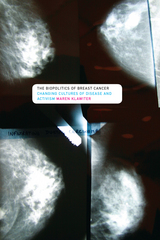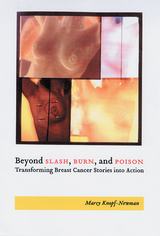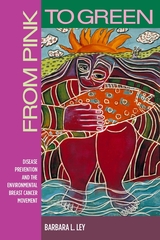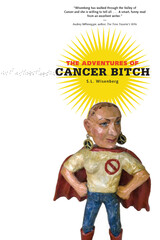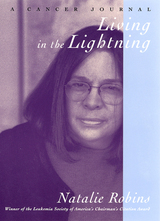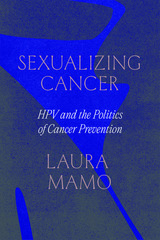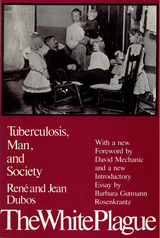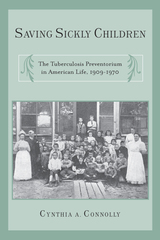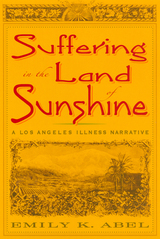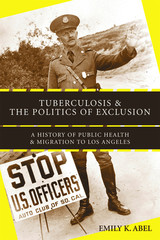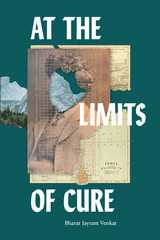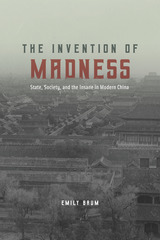[A] riveting account of the changing face of tuberculosis in American culture since 1870. With an ease that belies the depth of her research, Ott reveals how the glamorous middle-class consumptives of the late Victorian era gradually gave way to the impoverished, coughing wretches of this century, disenfranchised in part by germ theory and the hysteria that followed it.
-- New Scientist
Ott tells a fascinating story in describing the technology associated with medical advances, how these were interwoven with changing responses to and perceptions of disease, and how physicians' authority increased as they cornered the market in interventional expertise and microbiological understanding.
-- Richard J. Coker British Medical Journal
[An] interesting sociocultural history of tuberculosis from the 1870s to the 1930s...Ott's history reminds us that tuberculosis is foremost a disease of poverty. Today's narrow emphasis on its medical aspects may indeed prove to be myopic.
-- Barron H. Lerner New England Journal of Medicine
Ott brilliantly analyzes the material culture of tuberculosis...[and] clarifies the intertwined effects of medical theory, political ideology, and cultural symbols on the lives of those who became ill, those who cared for them, and those who feared them...Ott has mastered her material and written a thoroughly engaging narrative. In blending cultural history and medical history, she explains disease in a manner that denies neither its corporeal reality nor its cultural construction, concepts that disciplinary adherents in each of these subspecialties sometimes seem dangerously close to suggesting are mutually exclusive. Her writing is eloquent and accessible, even when she is forced by her subject matter to employ unfamiliar medical terms and to discuss medical practices that can only be described as gruesome. The book is well illustrated and the illustrations well captioned. In short, this is a terrific book for social historians who seek to incorporate medical history into their understanding of nineteenth- and twentieth-century life.
-- Janet Golden Reviews in American History
Historians have sometimes held that [the] new 'scientific' model put an end to the old habit of passing moral judgements on the sick. But Ott argues the contrary. The idea that TB was an infection, spread by invisible particles, heightened fear of the disease, and led to a battery of measures--like laws against spitting--which, while well-intentioned and perhaps moderately effective, served to isolate the tubercular as a sure source of danger...Lest we allow ourselves to be complacent, Dr. Ott ends this excellent--and well-illustrated--book on a sombre note. Tuberculosis has never shown any sign of being vanquished throughout the third world. Alongside malaria, it remains the most lethal disease worldwide.
-- Roy Porter History Today
Should you read Katherine Ott's Fevered Lives from your cultural moment in this age of AIDS, you will find telling comparisons and informative disjunctions in the public perception of contagion itself...[Ott] weaves a compelling narrative.
-- Tamise Van Pelt Southern Humanities Review
[The] thrust of [Katherine Ott's] account is to advocate an awareness of the cultural complexities and limitations of epidemiological tools and the pluralistic cultural meanings of disease. Indeed, she has succeeded in doing this very well, and her book constitutes a major contribution not only to the history of tuberculosis but to the history of medicine in general.
-- Linda Bryder Medical History [UK]
A splendid survey of the multiple sites and practices in the social construction of tuberculosis...Ott shows the ways various therapies and diagnostic practices shaped a political economy of health care in which patients evolved various needs as they were instructed by mail-order catalogues or the dictates of fashion...This book evokes a sort of fetish of instruments and techniques which returns medicine to the broader social context of a developing consumer society...[An] exhilarating book.
-- Gerry Kearns Social History of Medicine [UK]
An enlightening interdisciplinary look at how genteel consumptives have evolved into medicalized tuberculosis 'cases.' Viewing illness as both a cultural and a physical phenomenon, Ott...considers perceptions of, and approaches to, pulmonary tuberculosis...Ott's integrated, well-drawn picture offers food for thought to those interested in history and--one dearly hopes--medicine.
-- Kirkus Reviews
A rewarding medical history.
-- Library Journal
Katherine Ott sets...a very ambitious goal: to illuminate the multilayered meanings of tuberculosis as they have evolved over more than a century...Her book is short, well illustrated, and liberally documented. While medical ideas predominate in her content, most readers will appreciate the additional topics that she finds relevant to her themes, eg, migration and Western expansion, industrial capitalism, ideas about race and ethnicity, chest expanders and other gadgets promoted for consumptives, mind cures, psychiatric understandings of the disease, and governments' bureaucratization during the Progressive era along with their attempts to regulate poor consumptives who seemed to endanger the rest of society.
-- Barbara Bates Journal of the American Medical Association
Ott uses her knowledge of the past to uncover the multiple realities of historical tuberculosis, to express and interpret the changing perceptions of the disease among patients, carers, and clinicians. Beginning with middle-class American sickbeds in the 1870s, Ott traces the ways in which new medical knowledge and new social concerns transformed tuberculosis from a culturally respectable, romantic affliction to a disease of urban social outcasts, of the poor, the drug users, and those infected with HIV. Her concern is not to paint a vivid picture of the disease and its history, but to show it in the context of everyday patients' experience. She has lived in that past and listened to its resonances, and her analysis has a poignancy, an authenticity.
-- Anne Hardy The Lancet

